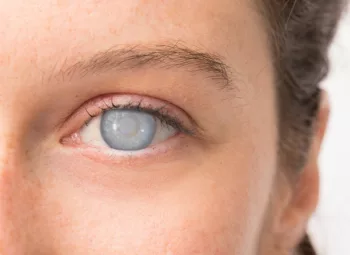
The Truth Behind the Most Common Cataract Myths and Misconceptions
More than 20 million people in the U.S. have cataracts, some of them as young as 40 years old. As we age our chances of developing cataracts increase, and by the age of 65, the likelihood is over 50%. While this degenerative eye disease is incredibly prevalent, cataract myths and misinformation about development, symptoms, causes, and cataract treatments are also very common.
At NeoVision Eye Center, our board-certified ophthalmologists have dedicated their careers to the diagnosis and treatment of eye conditions like cataracts. In this guide, we will help you discern fact from fiction, and clear up some of the most common cataract myths to help ensure the longevity of your eye health for years to come.
Myth: Only Older Adults Get Cataracts
Most people associate cataract development with aging and older adults. While it is true that as we age, the risk of developing certain eye conditions does increase, cataract development can begin at any age. In fact, in rare cases, babies can even be born with cataracts.
Fact: You Can Develop Cataracts at Any Age (Even at Birth)
There are a number of factors that can contribute to the development of cataracts at any age, including:
- Traumatic eye injuries
- Medical conditions (such as diabetes)
- The use of steroids or the prolonged use of other medications
- Lifestyle choices (i.e., smoking or a poor diet/nutrition)
- Genetics
That said, caring for your eye and vision health as you age is an essential part of maintaining a high quality of life. It is advised that anyone over the age of 40 years old should receive a routine eye exam every year.
Myth: Cataracts Grow Over Your Eye
Another common cataract myth is that they grow over your eye. This is likely because cataracts cloud your vision, which gives the impression that something must be covering the eye, but that isn’t actually what is happening.
Fact: Cataracts Develop in the Eye Lens
Cataracts actually develop within the eye lens, which is located behind the pupil. They occur as a result of the breakdown and clumping of natural proteins inside the lens. As more proteins clump together, the lens becomes clouded and this dense mass prevents light from entering your pupil thus reducing your ability to see.
Myth: Cataracts Just Make Your Vision Blurry
While blurry vision is one of the most prominent symptoms of cataracts, this condition can cause an array of symptoms – and blurry vision isn’t always one of them.
Fact: Cataracts Have a Variety of Possible Symptoms
The possible symptoms of cataracts are as follows:
- Colors appearing yellowed or faded
- Sensitivity to light
- Dim, blurry, or cloudy vision
- Trouble seeing at night/in the dark
- Seeing double
- Requiring extra light to see clearly
- Unstable prescriptions for your glasses
- And more
Myth: Only Unhealthy People Get Cataracts
One common misconception is that cataracts only develop as the result of unhealthy habits or lifestyle choices. Although it is true that healthy living can reduce the risk of developing cataracts, this does not mean they don’t affect those who are in good health.
Fact: Healthy Lifestyles Can Reduce Your Risk of Cataracts
Among many positive lifestyle changes, regular exercise, a well-rounded diet, and avoiding alcohol and cigarettes can greatly reduce your risk of developing degenerative eye conditions like cataracts.
Myth: You Can Cure Cataracts with Medication
There is currently no type of medication or eye drops that is approved by the FDA for the treatment of cataracts.
Fact: Cataract Surgery is The Only Way to Remove a Cataract
Laser cataract surgery is the only treatment available to permanently cure cataracts. The surgery is an incredibly effective and safe, outpatient procedure, that permanently removes cataracts and restores vision loss caused by this eye condition.
Myth: Vision Loss from Cataracts is Permanent
Unlike eye conditions like macular degeneration or glaucoma that cause permanent blindness, vision loss caused by cataracts can be restored.
Fact: Intraocular Implants (IOLs) Can Restore Your Vision
Vision loss caused by cataract development can be completely reversed with laser surgery. After the cataract is removed, light will once again be able to enter through your pupil allowing you to see more clearly.
Myth: Cataracts Grow Back After Surgery
It is not uncommon for people to be concerned about going through with surgery if they believe that their cataracts will just grow back again. Thankfully, cataract growth is impossible after laser surgery.
Fact: Laser Surgery Removes Cataracts Permanently
Cataract development compromises the function of your natural eye lens. In order to effectively treat this eye condition, your natural lens is removed and the cataract along with it. The lens is then replaced with an artificial one called an Intraocular Lens Implant (IOL).
Without a natural lens, your eye will no longer produce the proteins that cause cataracts, thus making the possibility of a cataract growing back impossible.
Myth: Cataract Surgery is Dangerous
Having surgery on a delicate area like the eye can be a little nerve-wracking. Thankfully with years of scientific research and technological advancements, cataract surgery is an incredibly safe, effective, and quick outpatient procedure.
Fact: Cataract Surgery is Safe and Pain-Free
Over 2 million people undergo elective cataract surgery every year in the U.S. The vast majority of patients report feeling no pain or discomfort during surgery and experience no complications following cataract removal.
In fact, it is actually one of the most common procedures performed every day and averages a 99% success rate.
Myth: My Vision is Fine, So I Can’t Have Cataracts
Unfortunately, one of the most common – and detrimental – cataract myths is that the symptoms are obvious. However, as with many other ailments, the lack of symptoms does not necessarily mean there is no issue.
Fact: Many People Don’t Know They Have Cataracts for Years
In reality, it is possible to have cataracts for years without knowing. Within the first two years of development, some cataract patients may not experience any visual symptoms at all.
Diagnosing eye conditions as early as possible is the best way to reduce the risk of irreversible damage or blindness. This is why getting regular eye exams is an imperative part of maintaining your health, safety, and quality of living.
During annual exams, your ophthalmologist will be able to see the signs and symptoms of eye conditions like cataracts that may be invisible to you.
Take Control of Your Eye Health by Scheduling a Cataract Exam with NeoVision
Although there are many cataract myths and misconceptions, one fact that is indisputable is that taking control of your eye health starts with getting regular comprehensive exams. Preventative care and early detection are essential to ensuring the longevity of your vision and quality of life.
The ophthalmologists at NeoVision Eye Center have years of specialized experience in the diagnosis, treatment, and aftercare of all eye diseases including cataracts. We invite you to schedule an appointment to meet with our team today.
Have more cataract related questions?
Dr. Tandon has over 18 years experience helping people like you treat their cataracts and put them on track to better, clearer vision. Talk with her today.
"*" indicates required fields





